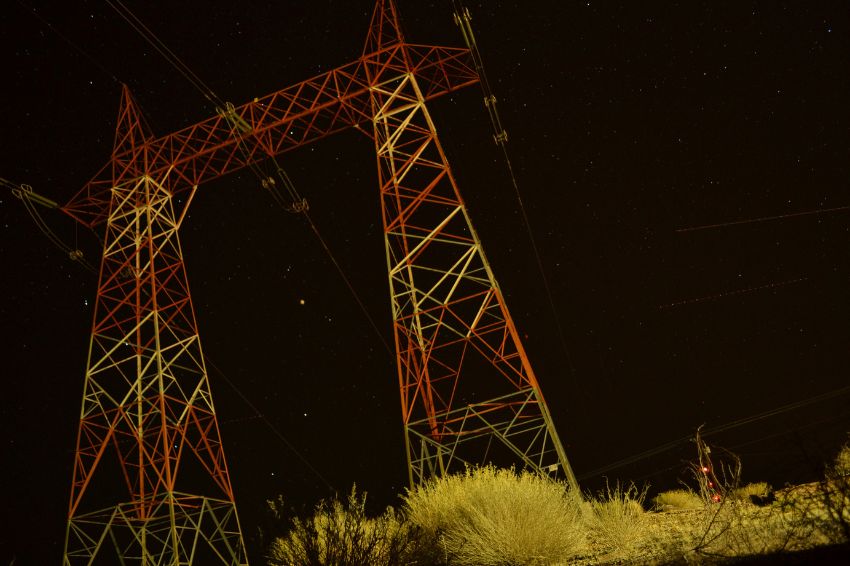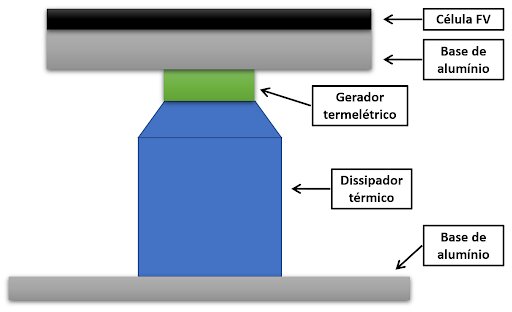It appeared in various media outlets, from specialized technology websites to popular news newspapers, the news of a “solar panel that generates energy at night”. Regardless of the scientific basis for this type of news, there is almost always a certain amount of exaggeration.
The article "Nighttime electrical power generation at a density of 50 mW/m2 via radiative cooling of a photovoltaic cell”, which is the source of all this noise, was published in the magazine “Applied Physics Letters” on April 5th of this year, accompanied by complementary material that can be obtained by clicking here.
The magazine PV Magazine published a summary of the original article on April 6th and the magazine Electronic Design published the article “Hybrid PV+TEG Device Yields Day/Night Solar Harvesting”, dated April 21, which explains the subject more completely, also based on the original work.
The original article published in “Applied Physics Letters”, produced by researchers from the renowned Stanford University, begins his summary with the following paragraph (in direct translation), which seems to be the harbinger of a miraculous solution for the generation of electrical energy:
“A large fraction of the world’s population does not have access to the electrical grid. Standard photovoltaic (PV) cells can provide a renewable source of off-grid electricity, but they produce power only from daytime solar irradiation and do not produce power at night.”
And so the abstract of the work ends: “Our system can be used as a continuous renewable energy source for day and night in off-grid locations.”
Things like this make us think that we are facing a disruptive innovation, which will provide infinite electrical energy to people 24 hours a day, rain or shine, without the use of batteries. is this really true?
Thermoelectric generator
The basis of Stanford's invention is the thermoelectric device of Seebeck-Peltier, which has reversible thermodynamic behavior and can be an electrical energy generator or a heat pump powered by electricity.
The thermoelectric generator is a device that converts heat flow (obtained from temperature differences) directly into electrical energy through a phenomenon called Seebeck effect.
The thermoelectric generator is commercially available in the form of tablets that have a hot side, a cold side and two electrical terminals, positive and negative. Simply attach the respective sides of the tablet to bodies with different temperatures to obtain an electrical voltage at their terminals, like a battery.
These devices are sometimes also called Peltier inserts because they can be used with the reverse phenomenon, that is, producing temperature differences from the application of electrical voltage to its terminals.
These inserts, through the Peltier effect, can be used in refrigeration applications, with the direct creation of a heat flow from an electrical source. However, the efficiency is low (that is, a lot of electrical energy is used to produce little difference in temperature), which makes its use unfeasible to compete with conventional refrigeration systems.
Stanford's work
The research published in the journal “Applied Physics Letters” presents the prototype of a device that consists of a photovoltaic cell coupled to a thermoelectric generator.
A solar panel that works at night, as claimed by the press, has not been invented. The aforementioned work only published the results of an applied physics experiment with a small photovoltaic cell and a thermoelectric chip that can be purchased on the market.

Although they recognize that there were previous experiments on the same subject, the authors state that the energy produced by the current device is much higher, with a density of 50 mW (milliwatts, or thousandths of watts) per square meter.
The experiment used a monocrystalline photovoltaic cell and a commercial thermoelectric generator TG12-4-01LS, shown in Figure 2, with dimensions of 30 x 30 x 3.22 mm, assembled as shown in Figure 3.
Figure 4 presents a performance graph found in the thermoelectric insert data sheet. It can provide a power of 4 W if its cold side is at 50 oC and its hot side is at 230 oC – that is, a temperature difference of 180 oC between the two sides.
It can then be seen that the practical use of this tablet requires very high temperature differences, not normally found anywhere. In the experiment carried out, the temperature difference is very small and the tablet provides only a tiny fraction of its normal power, according to the conditions shown in the graph.

Conclusion
For comparison, a conventional 540 W solar panel delivers approximately 160 W/m2 (daytime) under NOCT (nominal cell operating temperature) conditions – a power density 3168 times greater than 50 mW.
Looking at it another way, a 540 W solar panel equipped with the proposed thermoelectric solution would be equivalent to a 0.16 W panel at night. We would need 3,168 panels like this to achieve the same power obtained during the day.
And things get even worse if we analyze the cost of using this device on a large scale, with solar panels having their backs covered in thermoelectric pads and thermal sinks. We would produce a very small amount of energy at a very high cost.
A single thermoelectric pad costs around $22 dollars and we would need at least 60 of them to manufacture a panel, apart from the cost (and weight) of the thermal sinks.
So, instead of thermoelectric generators, we came to the conclusion that it is better to use batteries to store energy during the day, generated from conventional photovoltaic modules.
Although the Stanford experiment is still interesting and valuable, like all technical-scientific experiments, the invention is still far from being announced as a “solar panel that works at night” or as something that could meet energy needs of any kind. of consumer.
Devices like this can be an interesting solution for “energy harvesting”, a term we generically use for obtaining energy anywhere it is available, usually in places or situations where it would be wasted.
Thermoelectric generation is a very good example of energy harvesting. You can use the temperature difference between the air and the body of a machine, for example, to produce energy (very little, but enough) to power some very low-consumption electronic device.
We can think the same about the photovoltaic-thermoelectric hybrid solution: it may be an alternative to power micro-equipment with low consumption at night, but it is definitely not yet “a source of continuous renewable energy for day and night in off-grid locations ”, as it was advertised.



















2 Responses
Congratulations on the article!
Although any use of a type of energy that would be considered a loss due to not being used for the final purpose for which it was intended, we must always take into account the cost at which this energy is used. The binomial cost and energy efficiency, nowadays, is an inexorable condition and cannot be ignored. Most transformations from one energy to another are done with the appearance of thermal energy, which is the most common of all forms of energy, even when we sleep. It is very important that these myths are debunked, especially when it comes to science and innovation. The world is full of people who cheat on results that create expectations beyond the real ones. I congratulate you on the publication. Engineer, professor, master in electrical engineering sciences – power system – COPPE/UFRJ, designer and consultant in photovoltaic generation and energy efficiency.